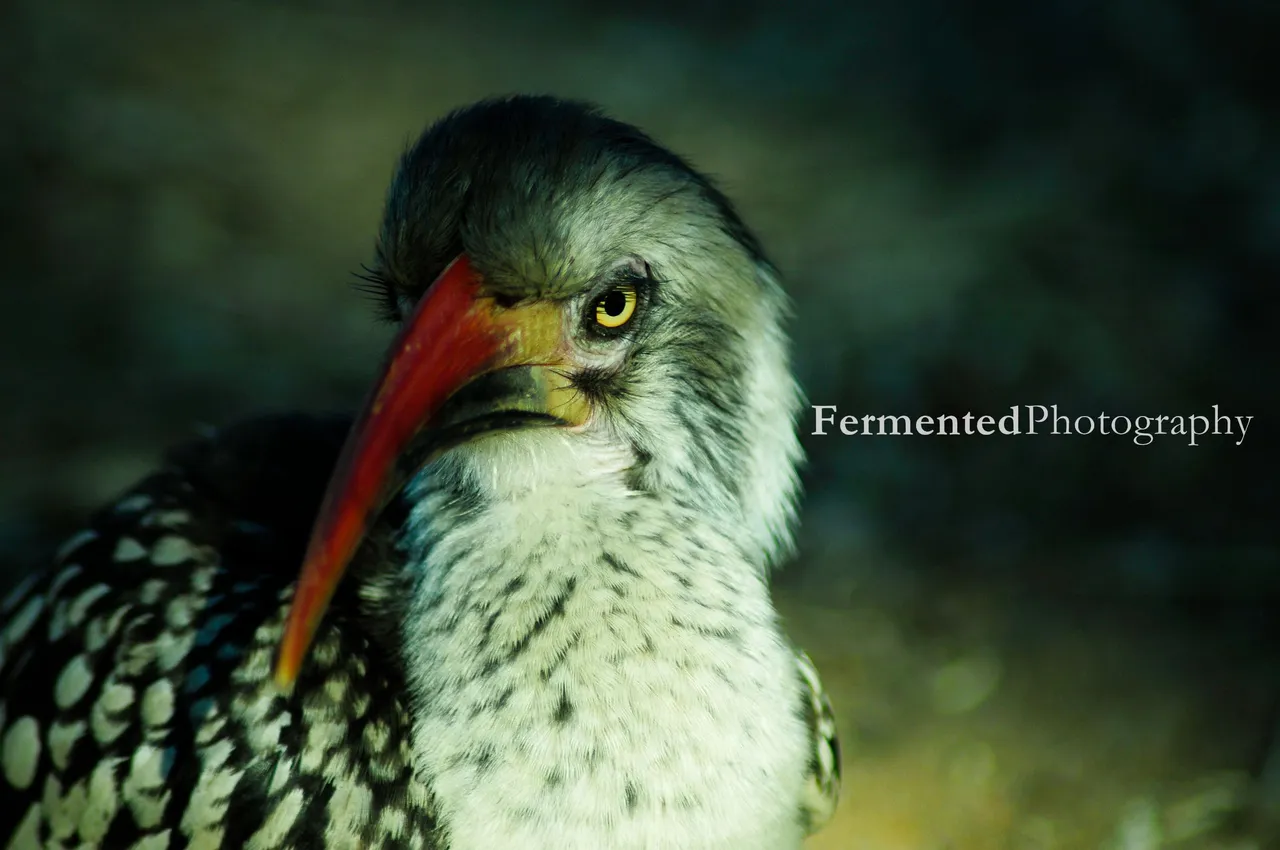
life contained in its eye
the world revolving around sight
yellow enclosing a black hole
that swallows me in
As a photographer, I dream about having an object that sits right in front of me. So many times when birding, the little bird is either just too far away or it flies away the moment you get ready to press the shutter. This is obviously a fantasy as these are wild animals, and they should be! As the photographer, I only capture what I observe, I do not control life. And that is the beautiful thing about photography: I show you, the viewer, how I observe life.
But in a sad turn of events, we humans have encroached on wildlife's territory and in some cases where we have not totally eradicated life, wildlife adapted around us. So many bird species have become used to us feeding them. As a photographer, this gives me the unique opportunity to come really close to birds that might have flown away otherwise. In a previous photography post, I captured the yellow-billed hornbill. In that post, I called them the perfect models exactly for this reason, that they have become so used to us.
In a strange turn of events, my zoom lens becomes almost redundant because I can get right next to them. Using this to my advantage, albeit truly sad, I can peer into their eyes, I can capture their essence. And what a wonderful opportunity. By seeing them up close, one can hope that others might feel sympathy for them and change their ways of being so that we do not continue to destroy their environment. For now, it seems that their numbers are stable and growing. All of this said, I hope that you enjoy these photographs of this beautiful animal, the red-billed Hornbill.
Yellow Tinted Gaze

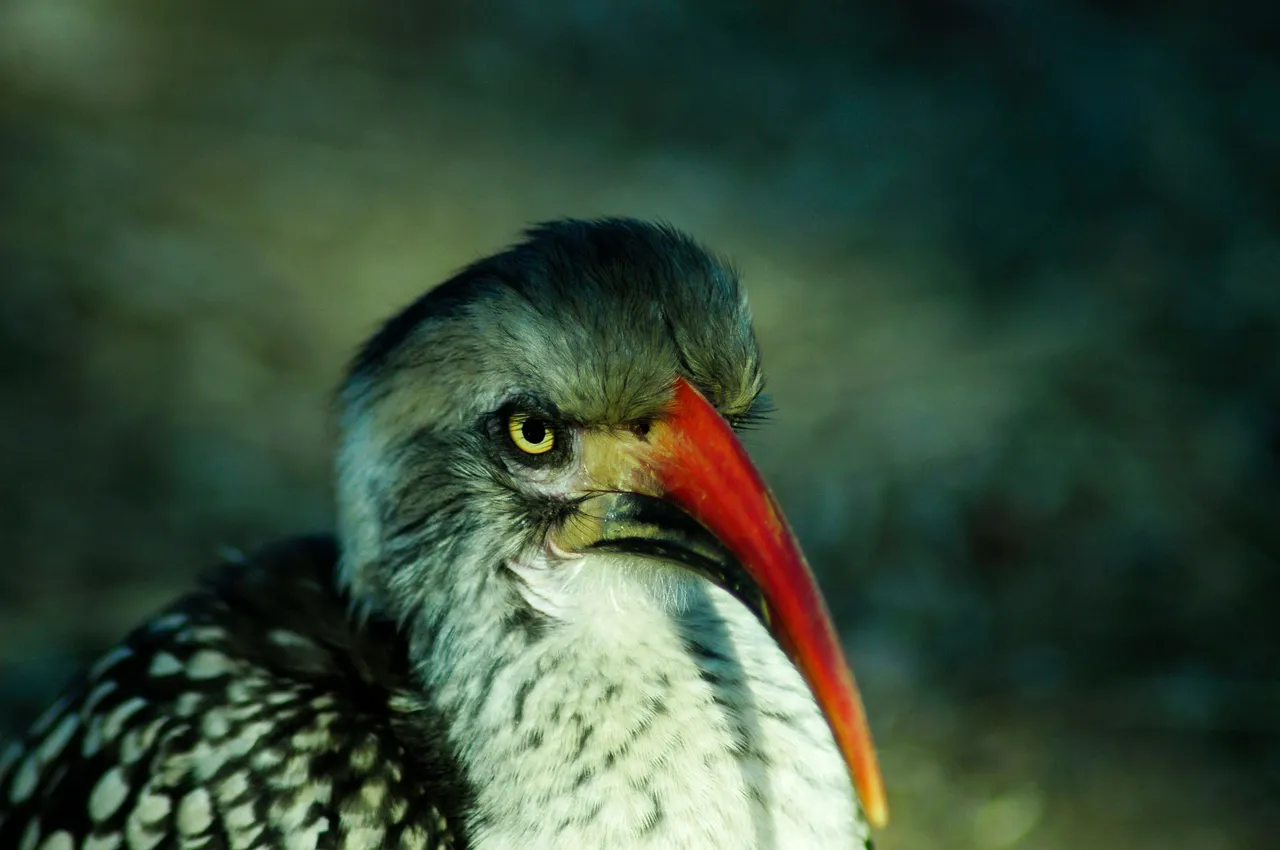
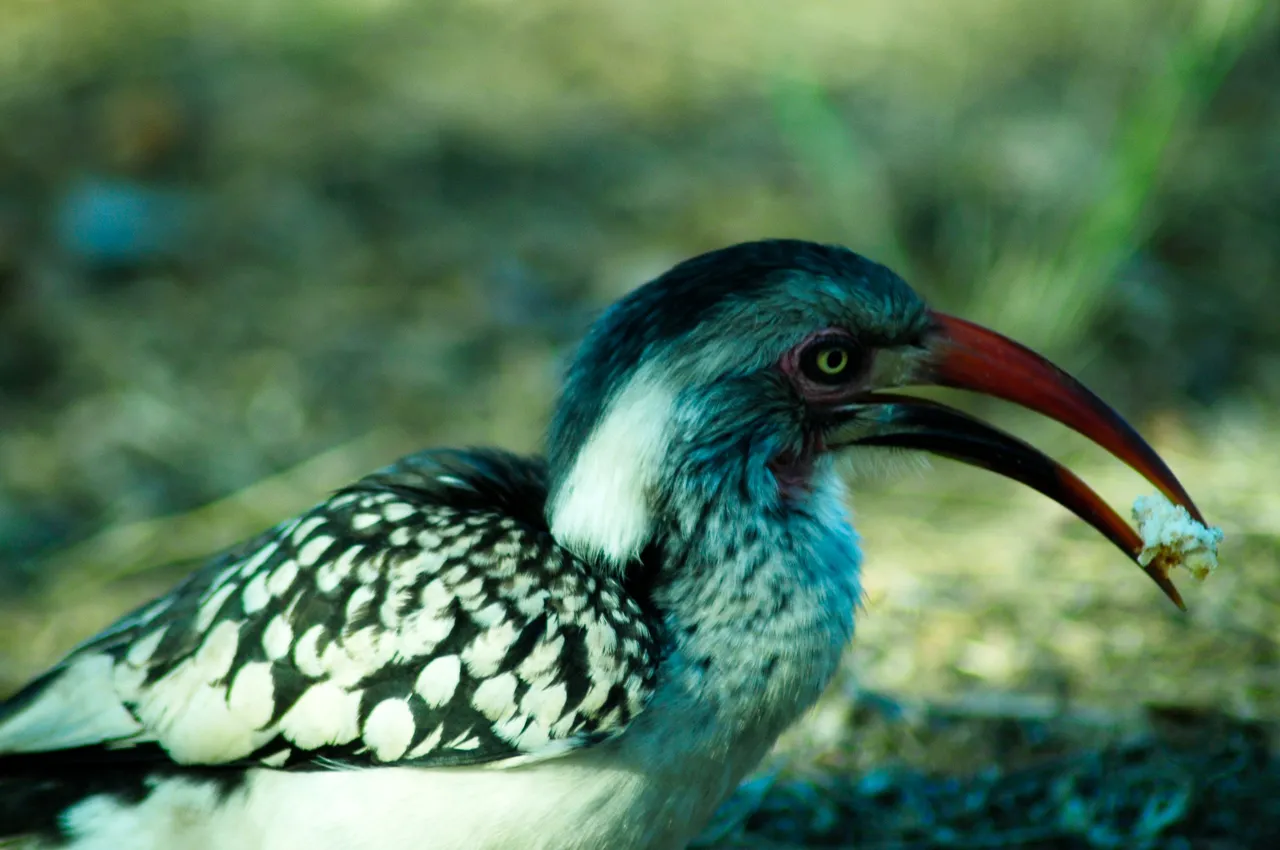
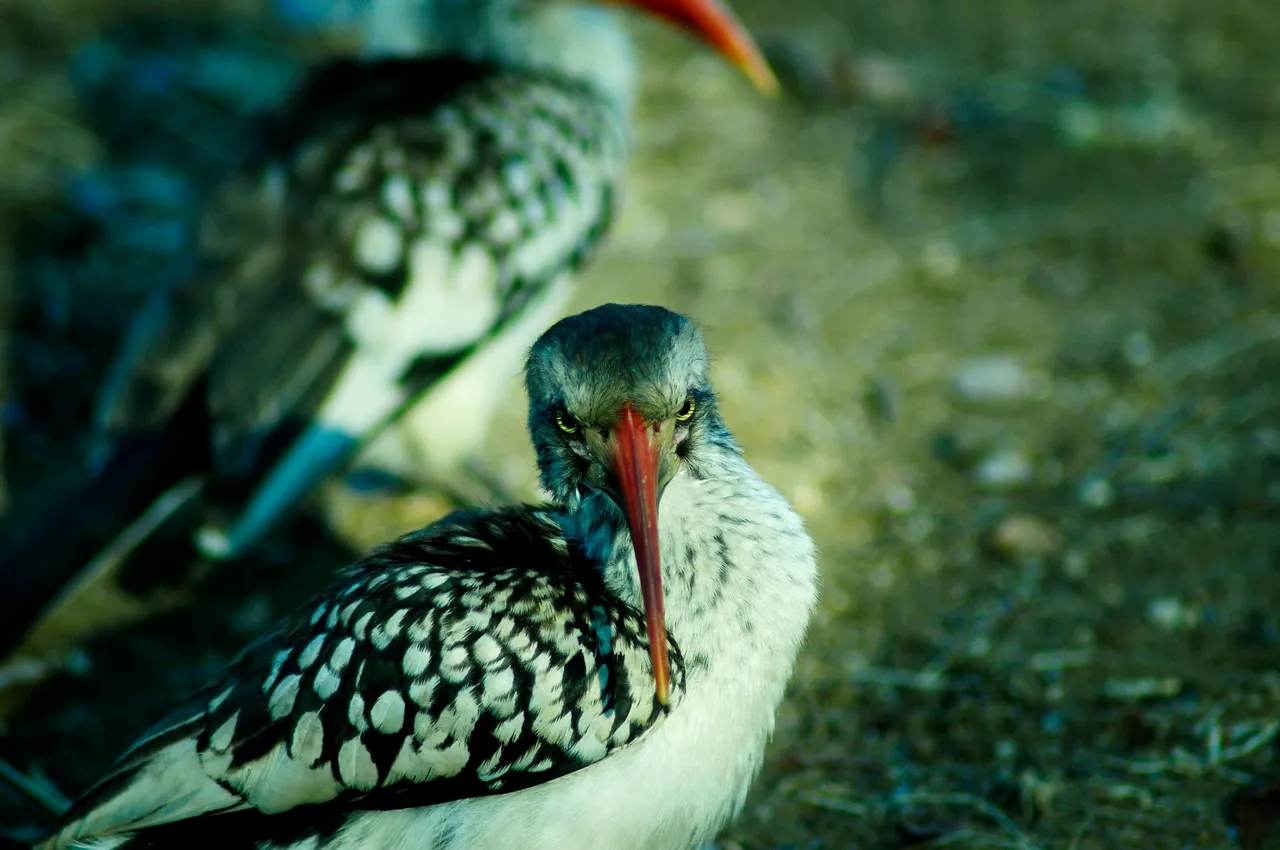
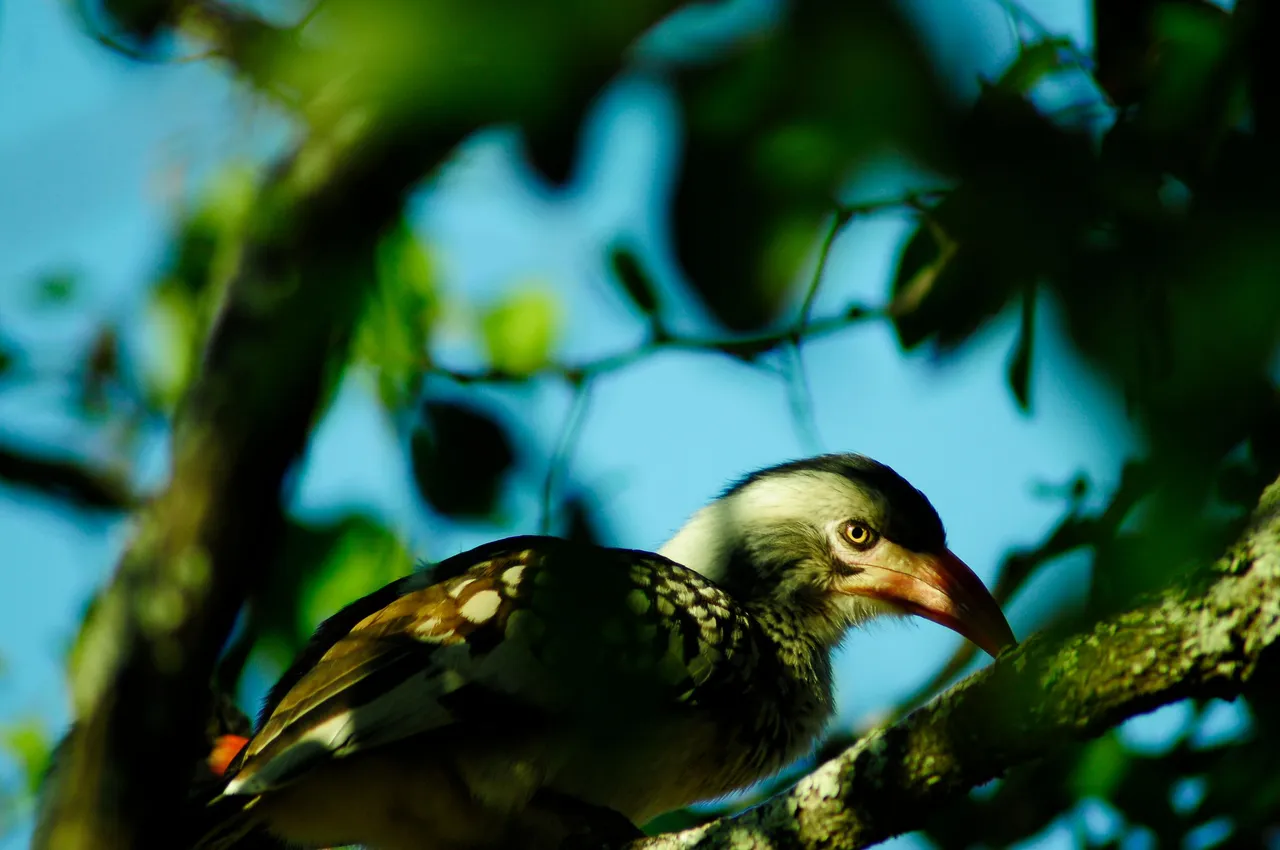
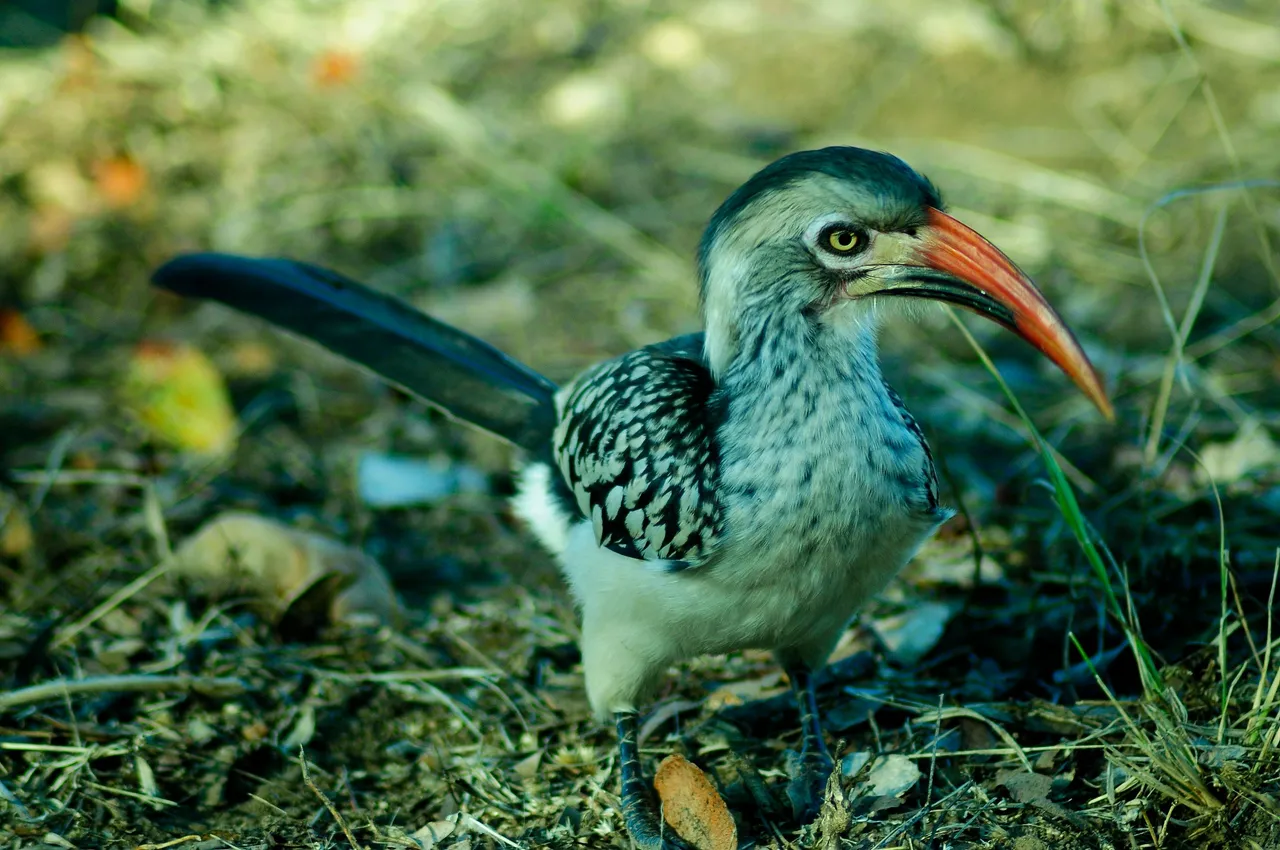
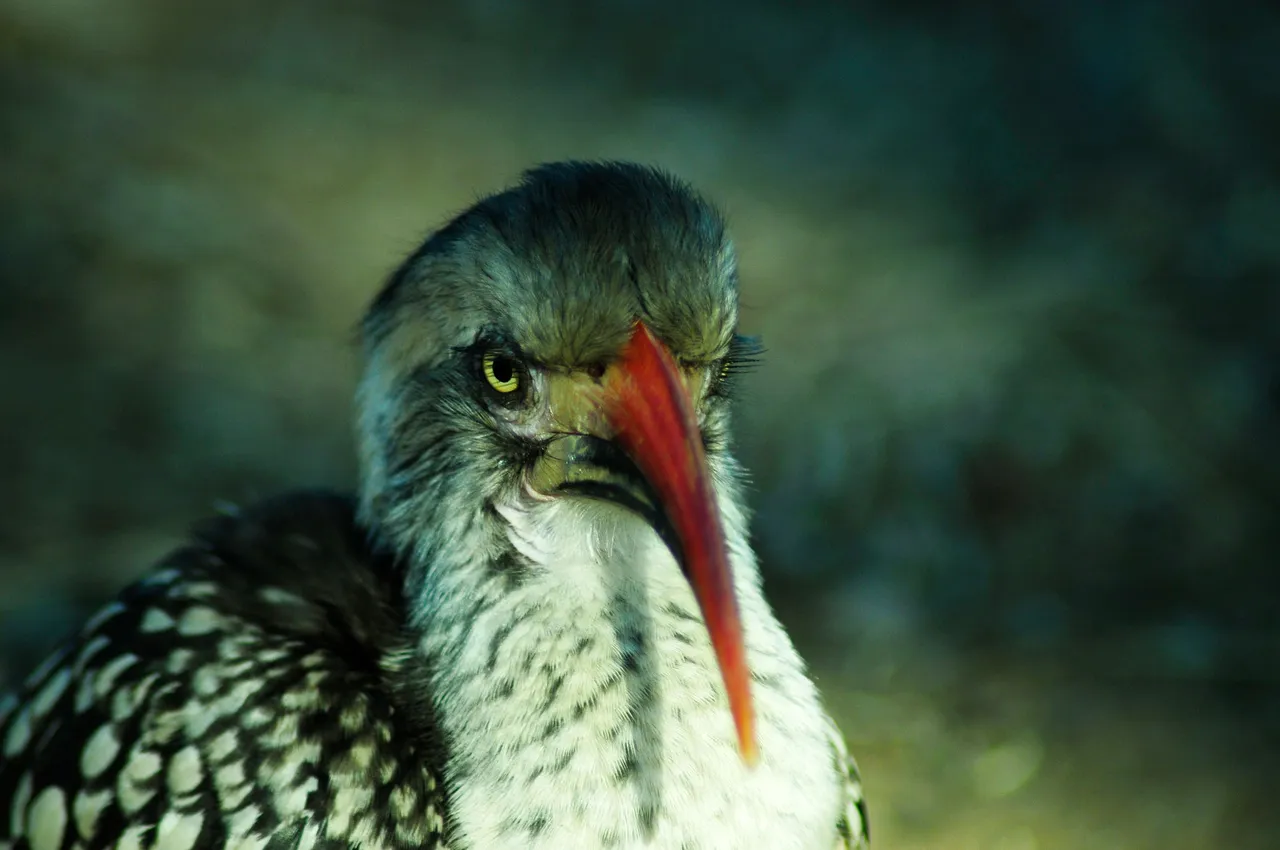
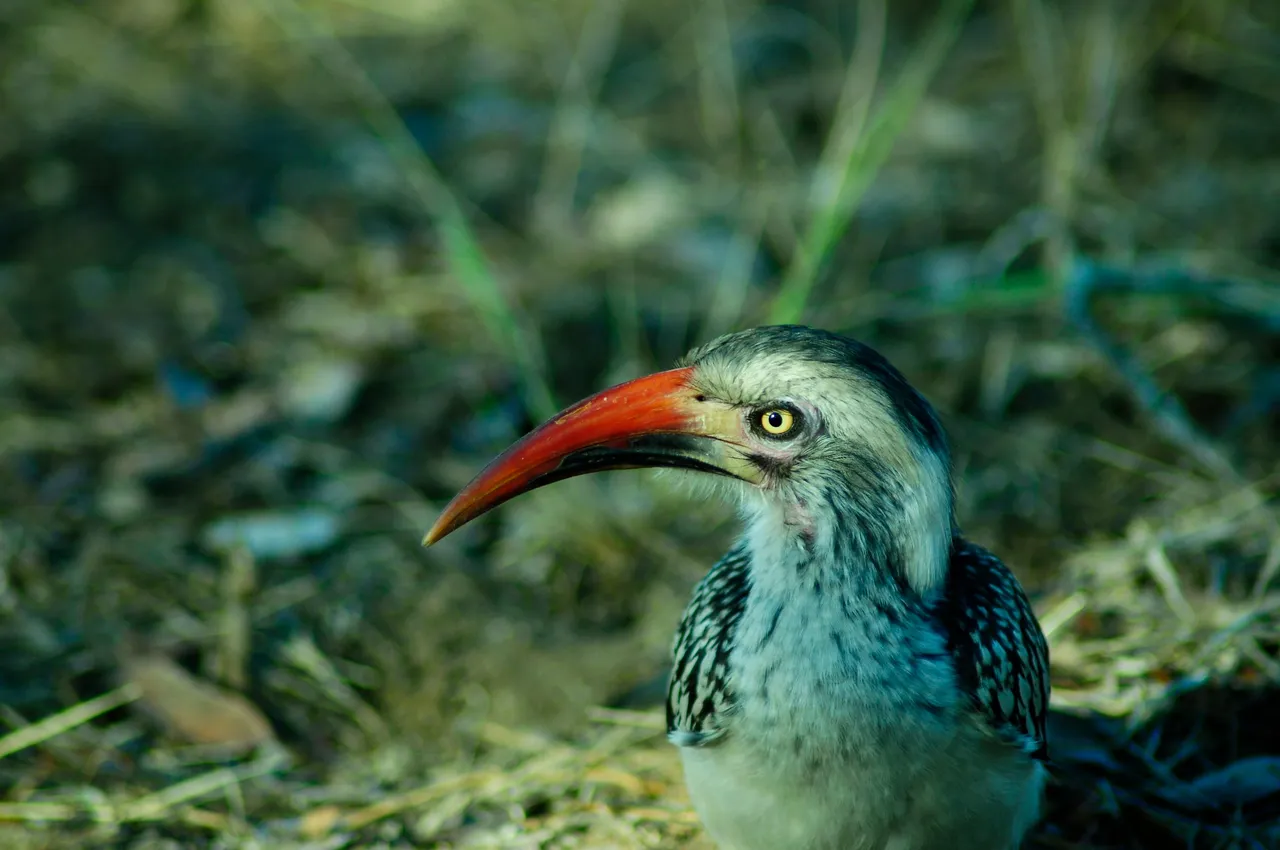
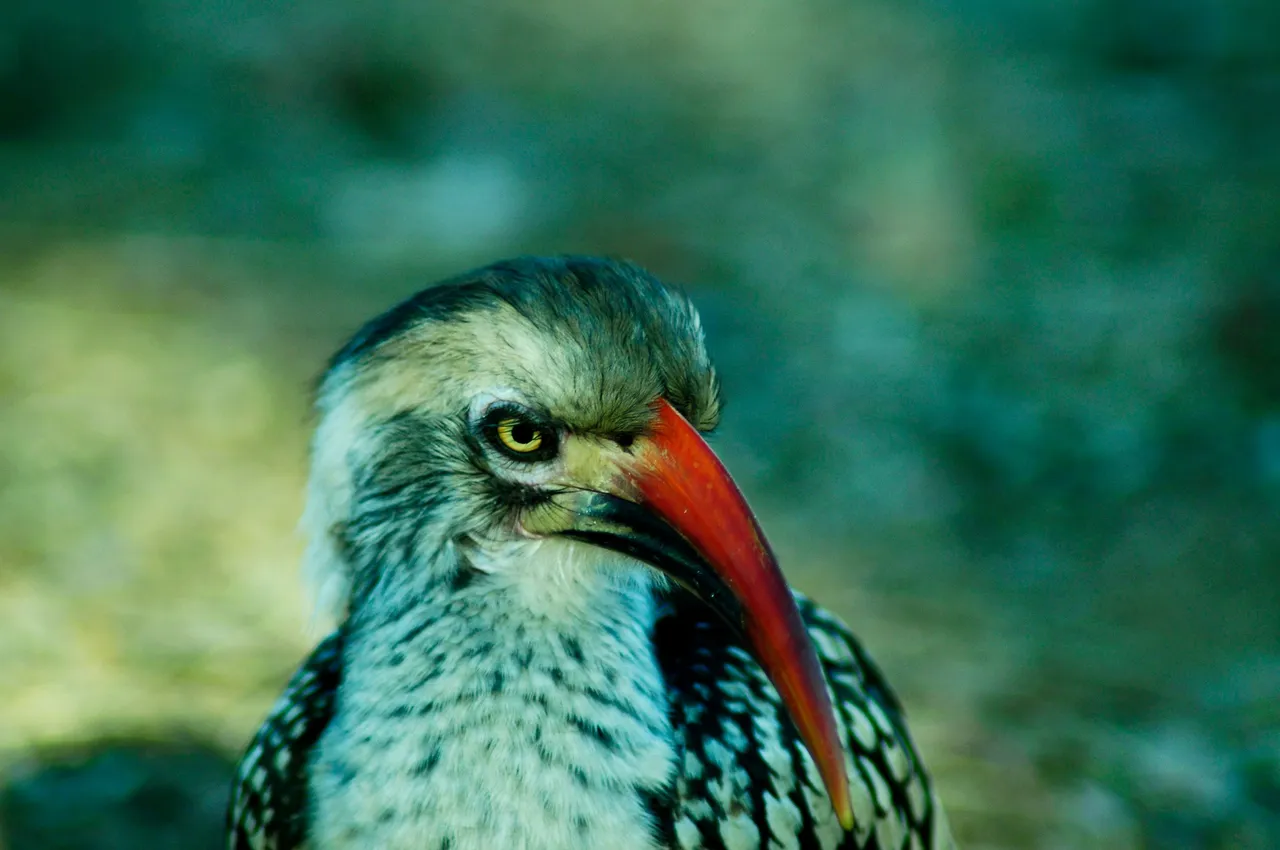
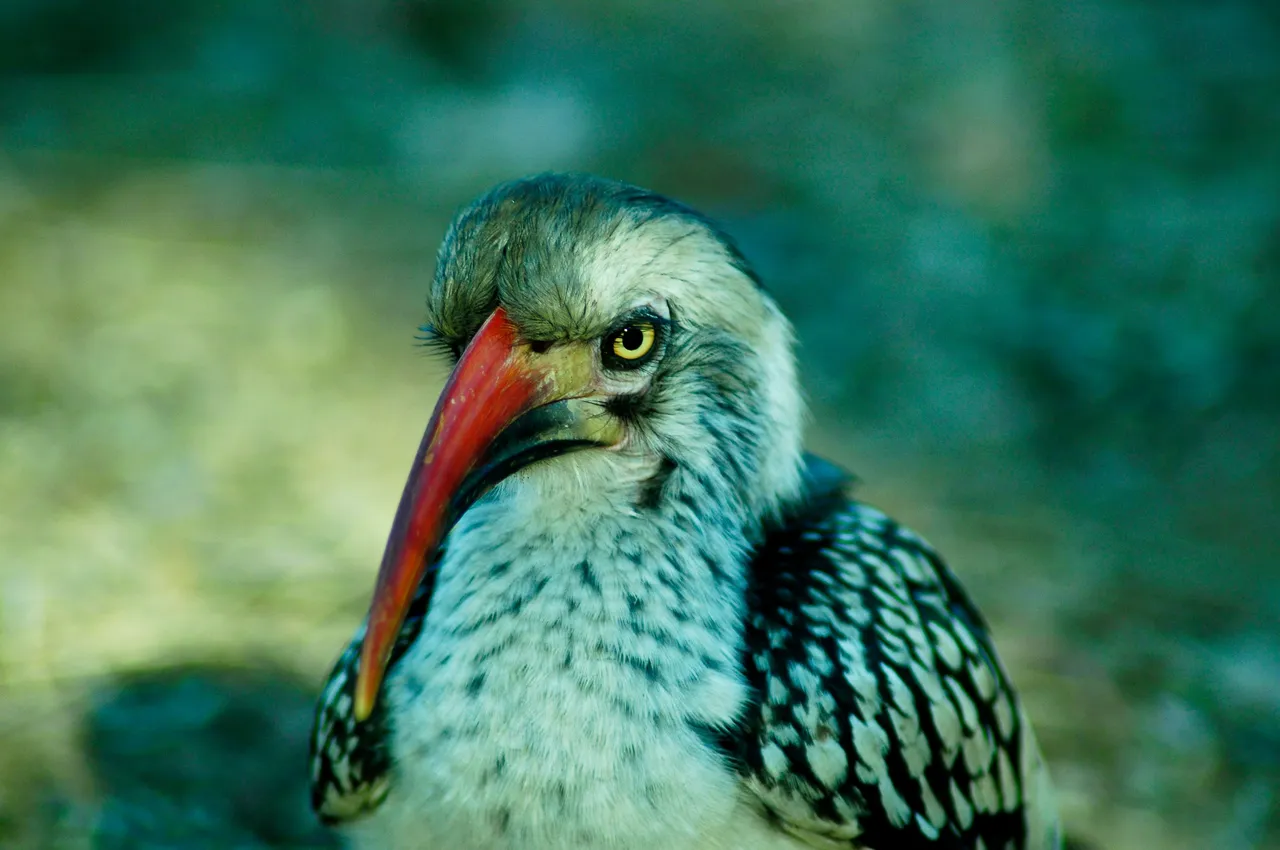
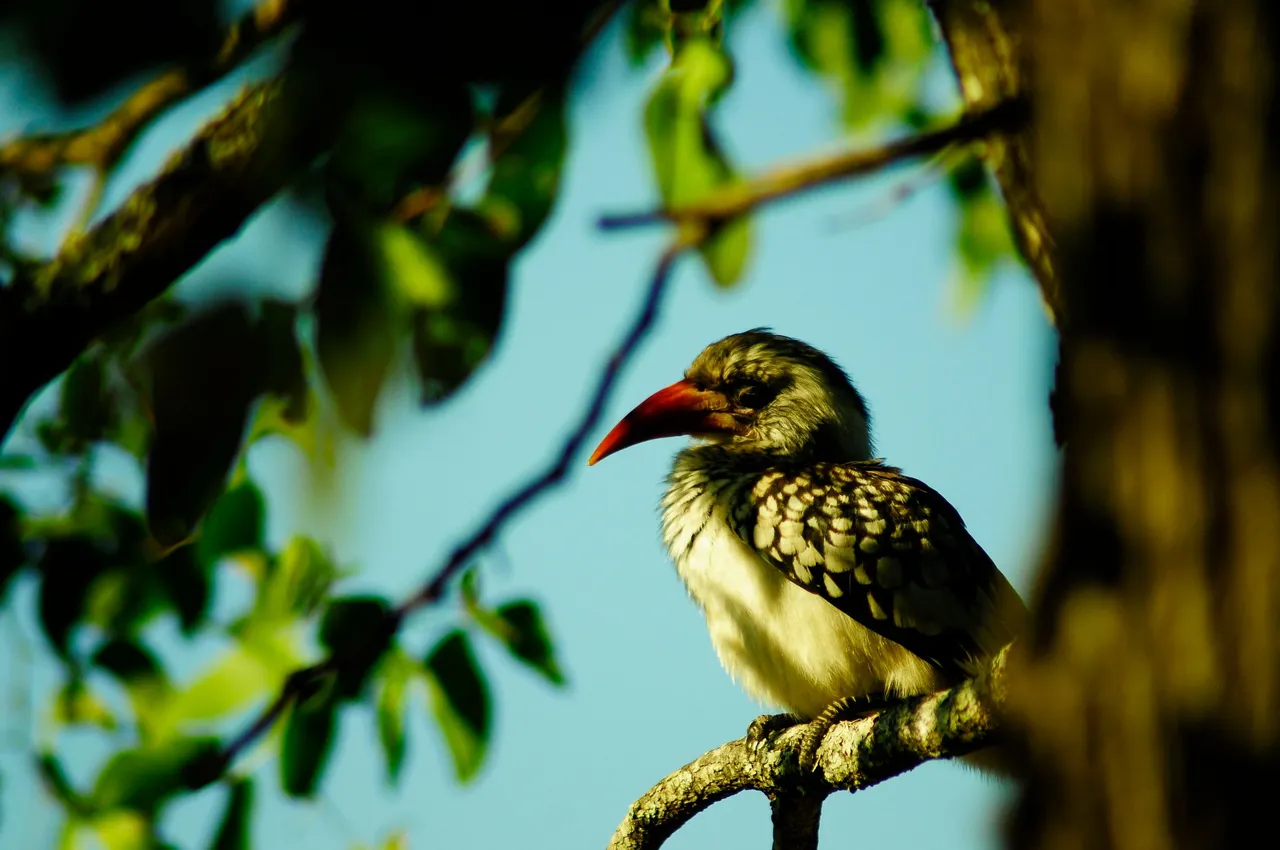
Postscriptum, or What Do You Want to See?
The photograph is usually understood to be the most objective way of conveying events. People always ask for photographing evidence. It is used by media all over the world to showcase how events took place. But we often forget that what happens behind the lens is just as important. People often forget that the photographer can move around to manipulate the angles, they can move the subject or object they are photographing to look better/worse in order to evoke feelings in us, and with AI tech on the rise creating photographic real "fakes", one will always question the authenticity of photographs.
In taking these photographs of this lovely bird, the illusion is given that it is part of nature, that I needed to be far away from it in order to get such close-ups, or something in that line. But the sad reality is that these birds have become somewhat dependent on us. We feed them and they get so used to our interaction that we can literally get next to them. They are no longer wild animals. The photograph is a lie told by the photographer.
Okay, that might be too harsh of a statement. The photograph is much more reliable than eyewitness reports and drawings. But still, it can be used to tell a story far removed from reality.
Sometimes I think about these things when I edit the photographs. Maybe you have similar thoughts? Let me know in the comments!
For now, happy photographing and keep safe.
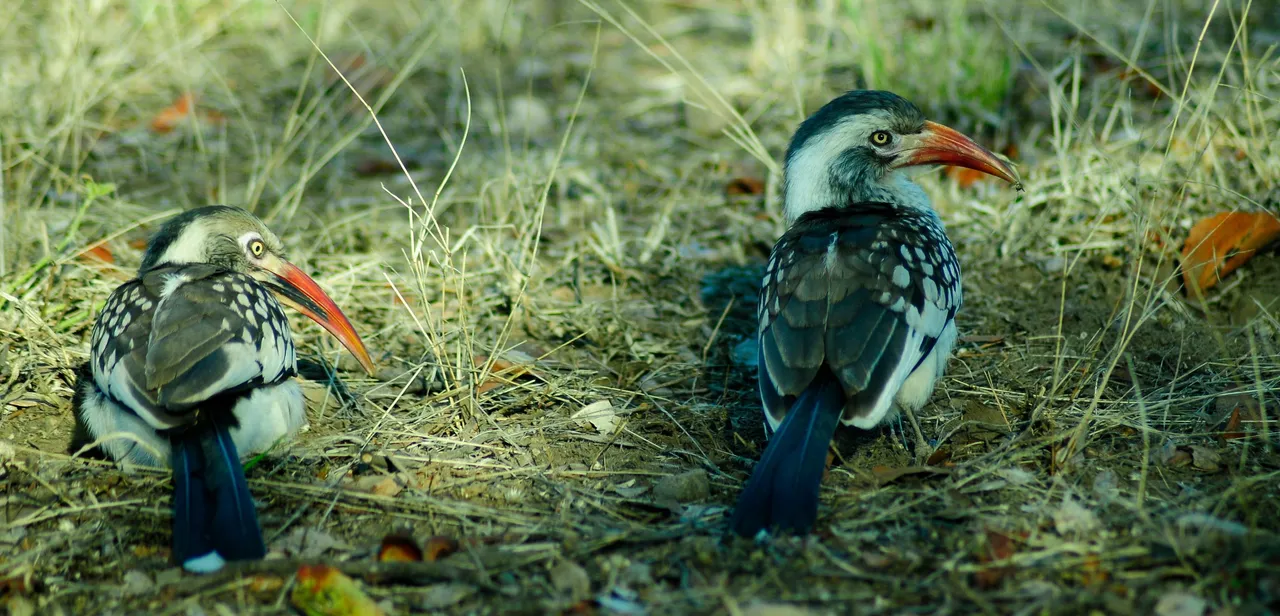
All of the writings in this post are my own creation. The photographs used are also my own, taken with my Nikon D300 and Tamron 300mm zoom lens.